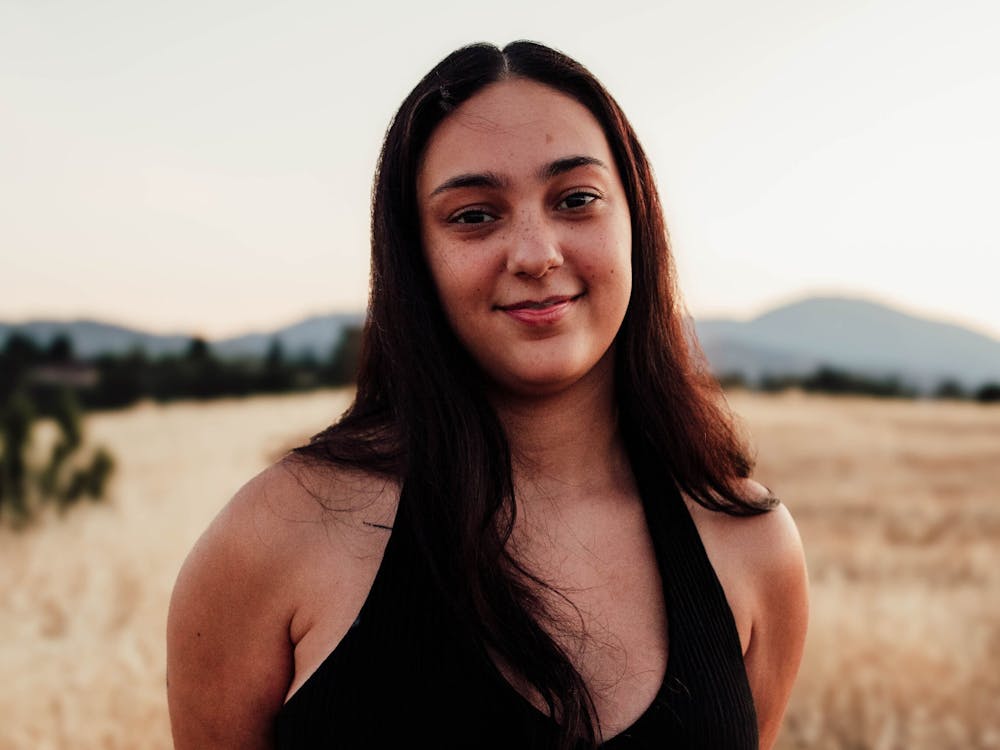In a painfully ironic technological glitch, when you search “Sexual Assault” from the up.edu homepage, the first link listed brings the viewer to a blank page. A blank white page labeled “Sexual Assault” – as if conversations about sexual assault don’t happen.
But what about when sexual assault does happen?
The Health Center provides SAFE (Stop Assault for Everyone) Advocate Network support for students, and our university has made significant strides combatting interpersonal violence through the Green Dot program. “Prevention” and “intervention” are words plastered on every pamphlet handed out and bulletin posted about sexual assault.
But what about when sexual assault does happen?
According to its website, UP is “committed to supporting those affected by all forms of interpersonal violence.” The topic of reacting to violence is given several pages in Life on the Bluff, but with all the publicity Green Dot gets, it’s unfortunate that the University is not also raising awareness of resources for survivors of sexual assault and interpersonal violence.
Green Dot does a lot of great training. Stopping sexual assault by teaching students how to intervene is crucial to decreasing interpersonal violence. Green Dot has, no doubt, prevented many sexual assaults and instances of interpersonal violence across campus.
But what about when sexual assault does happen?
No matter how many trainings we have on campus, there will still be a Red Dot happening somewhere: behind a closed door, in a dorm room, at the end of the hall. It’s happening.
UP isn’t the only university where students are asking questions about administrative responses to sexual assault. Students hauling mattresses across Columbia University campus are asking similar questions: What if it happens? What if it happens here? To me? What if it already did?
Sexual assault is happening. We need to talk about it.
According to the White House’s “1 is 2 many” website, 1 in 5 young women will become a victim of sexual assault while in college. And anonymous surveys conducted on campus in 2009 revealed that UP is no exception to national statistics.
After a night of partying – and admitted over-consumption of alcohol – UP student Laura*, woke up with few memories of the previous night. Her friends later informed her that she had left the party for a while with another UP student she met that night.
“As the day went on, I remembered everything that had happened,” Laura said. “It was so traumatizing, horrifying. I was crying all weekend about it. It was so scary.”
When Laura received a text from the perpetrator, a few days later, she was scared.
“All of a sudden I got a huge stomach ache, freaking out like ‘Oh God, he won’t leave me alone,’” Laura said.
After receiving several harassing and intimidating texts attempting to make her feel guilty, Laura reported the incident of sexual assault and harassment to Public Safety.
The case took nearly an entire semester to process. The investigators concluded there was insufficient evidence to determine if Laura had been incapacitated, and that the number of text messages the perpetrator sent didn’t qualify as harassment. Laura and the perpetrator have been advised not to contact each other and to walk the other way if they see each other on campus.
“I saw him (on campus) the other night,” Laura said. “I should not have to go into a room and feel like I don’t want to be in the room because he’s there.”
After the case was closed, Laura was encouraged to only discuss the details of her case with a small group of friends and university-approved professionals. But, for the confidentiality of the perpetrator, Laura was informed if she revealed the perpetrator’s identity to anyone other than the approved people, she would have to go through a student conduct hearing.
So after reporting the incident and spending a semester feeling trapped, Laura felt unable to speak freely about her experience, about her pain, about something that she said would affect her for the rest of her life.
We understand the University is in a difficult legal situation when it comes to dealing with sexual assault. We understand the students accused in these reports also deserve due process. Yet, it’s clear there are major flaws in the system, and some of them were out of the control of the investigators of Laura’s case. But the University has power to change some of the flaws.
We believe that the administration has the power to lead the discussion about the sexual assaults and rapes happening on our campus and among UP students. The first step is creating a safe space for survivors to talk, like a student support group. The second step is more intentionally guiding students beyond the reporting process, by checking in with students after the case is closed.
Our biggest concern is the silence.
Green Dot encourages speaking up against interpersonal violence, of breaking the silence before violence happens. So why are we so quiet after this violence occurs?
Quieting the voices of survivors doesn’t stop the acts of violence themselves – if anything it enables them to continue. When we’re quiet, we let misinformation and ignorance remain. A boy who thinks it’s okay to press up against a hesitant, drunk girl continues to think so. A girl who thinks it’s her fault she had to endure unwanted advances continues to think so. Someone who thinks they’re alone continues to think so.
It’s time we start talking. It’s time we start addressing the sexual assaults happening on campus. It’s time we had a campus with less violence, less fear and less pain. Sexual assaults are happening – there’s no “what if.” It’s time we started talking.
*Laura’s name has been changed to protect her identity*
Is there a student support group on campus for survivors of sexual assaults? If there is, show yourself. There are people who don’t know you exist that need you. If there isn’t, it’s time there was.
If you have thoughts and ideas you want to share on this topic, write into The Beacon at beacon@up.edu to keep this discussion going. To learn more about The Beacon submission policy visit upbeacon.com/voice-your-opinion.
Breaking the silence on the Bluff:
Laura isn’t the only student on campus who survived sexual assault. Another anonymous student wrote:
“My story probably begins just like all the others, I was out at a party with friends. The girl I was walking home with left with another guy and a guy I have known for almost a year offered to walk me home. I figured this was safer, but I was wrong. We got to my dorm and he followed me to my room and proceeded to sexually assault me. I figured it was my fault for not screaming, but in the moment I couldn’t even find my voice. Because it wasn’t sex, I reasoned there was no way to report and I should just get over it. In the days following, I blocked his number, facebook and figured it would all go away. It seemed after that night he was everywhere, in the commons, the library, and at parties that I went to. I wasn’t even sure if I could report it because it wasn’t sex. Its not talked about on this campus, and so I didn’t talk about it either.”
People to know:
Title IX Coordinator: Bryn Sopko, sopko@up.edu
Deputy coordinator: Rev. John Donato, donato@up.edu
Public Safety:
24-hour emergency: 503.943.4444
24-hour non-emergency: 503.943.7161
Reporting Violence:
Given Laura’s experience, it’s clear that the reporting process is flawed. But it’s the only process we have, and it’s the only way we can make a difference. While Laura’s case didn’t yield the results she hoped for, another report of assault committed by this same student could result in more serious repercussions. Reporting may not change the entire culture of campus, but it makes small ripples. And those ripples can create greater change.
- Reporting to the Public Safety does not obligate the student to pursue a Student Conduct case through the University system. A reporting student may engage the Student Conduct process at any time. The University itself may initiate the Conduct process or take other actions if a threat to the student or community is determined.
- A student may request confidentiality or that the complaint not be pursued. In such cases, the University will take all reasonable steps to investigate, to the extent possible, protecting the safety of the complainant and that of the campus community.
- Reporting to the University does not prevent reporting to police, immediately or in the future. A reporting student may report to the police at any time.
- Reports will be referred to the University’s Title IX Coordinator for appropriate follow up and administrative investigation.








